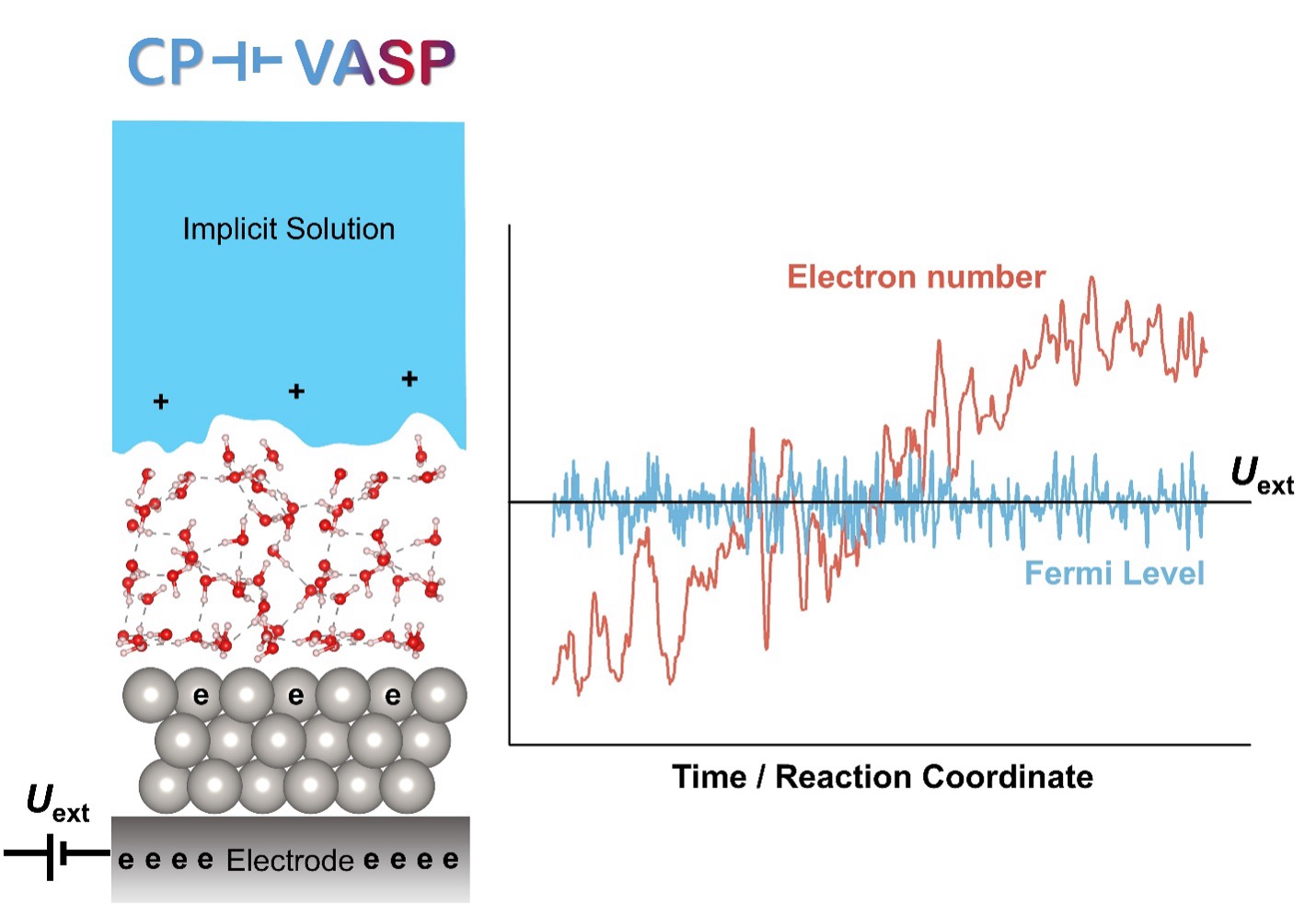Dr. Yuanyue Liu and his research group at the Walker Department of Mechanical Engineering and Texas Materials Institute at the University of Texas at Austin have released CP-VASP, a patch for the Vienna Ab-Initio Simulation Package (VASP) that enables Density Functional Theory (DFT) calculations under constant electrode potential.
This development is a significant step forward in accurately simulating electrochemical interfaces.
The electrochemical interface is central to many technologies aimed at addressing energy and environmental challenges. It is essential for a wide range of applications, including water splitting, carbon dioxide conversion, fuel cells, and batteries. Achieving an atomic-level understanding of this interface is crucial for advancing these applications.
Density Functional Theory (DFT) simulations are widely used to gain insights at this level, yet conventional DFT software assumes a constant number of electrons at the interface, a limitation that contrasts with real systems where electrons at the interface can exchange with those in the electrode. CP-VASP addresses this critical challenge, enabling electron flow in and out, controlled by the electrode, similar to real experimental conditions. Additionally, it implements the "Flash Solvation Method," effectively preventing the “flying solvent” problem at the explicit-implicit interface during molecular dynamics simulations.
CP-VASP has proven effective in advancing our understanding of complex electrochemical interfaces. For instance, it has uncovered the origin of product selectivity and the rate-limiting step in the oxygen reduction reaction on various catalysts—an essential reaction for converting fuel to electricity in fuel cells.
The development of CP-VASP began in 2020, led by Dr. Liu and Xunhua Zhao. The latest version, CP-VASP 2, represents a collaborative effort by Zachary Levell, Ruoyu Wang, Saerom Yu, Xunhua Zhao, and Dr. Liu.
For more information on CP-VASP, including installation details and troubleshooting, visit the GitHub repository and consult the CP-VASP manual: https://github.com/yuanyue-liu-group/CP-VASP/


